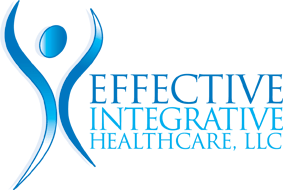Is Osteoarthritis Causing Your Lower Back Pain?

Lower back pain is one of the most common health problems in the United States, affecting around 80% of adults at some point in their lives. Osteoarthritis is a leading cause of lower back pain, responsible for around 50% of all cases.
Chronic back pain can be a difficult condition to deal with, but there are ways to ease your symptoms. Exercise, massage, and alternative therapies can all be helpful in relieving pain. Read on to learn more about the connection between lower back pain and osteoarthritis and about noninvasive treatment options.
What Are the Most Common Causes of Lower Back Pain?
Lower back pain can be caused by a variety of factors, including improper lifting, poor posture, and aging but some of the most common include:
- Strained Muscles: This is often the result of lifting something heavy or performing an activity that puts stress on the back.
- Degenerative Conditions: This includes things like arthritis, which can cause the joints in the spine to become inflamed.
- Herniated Discs: When the discs that cushion the vertebrae become damaged or ruptured, they can put pressure on the nerves in the spine and cause pain.
- Compression Fractures: These occur when the vertebrae themselves become fractured due to a traumatic event or from osteoporosis.
These are just some of the more common causes of lower back pain. However, there are many other potential causes, so it’s important to see a doctor if you’re experiencing back pain to get a proper diagnosis.
What is Osteoarthritis?
Osteoarthritis (OA) is a degenerative disease of the joints. It is characterized by the breakdown of cartilage, which is the tissue that cushions and protects the ends of bones in the joints. OA can affect any joint in the body, but it most commonly affects the knees, hips, hands, and spine.
OA is a progressive disease, which means that it gradually gets worse over time. The exact cause of OA is unknown, but it is believed to be a combination of factors, including genetics, age, obesity, and previous injury to the joint.
Who Is at Risk for OA?
OA can affect anyone, but there are certain factors that increase your risk for the disease. These include:
- Age: OA is more common in older adults. This is because the joints begin to wear down with age.
- Obesity: Extra weight puts extra stress on the joints, which can lead to OA.
- Previous injury: Joints that have been injured in the past are more likely to develop OA later in life.
- Genetics: If you have a family history of OA, you may be more likely to develop the disease yourself.
What Are the Symptoms of OA?
The signs and symptoms of osteoarthritis of the lower back can vary from person to person. Some people may experience only mild discomfort, while others may have severe pain that limits their ability to perform everyday activities.
Recognizing the symptoms of OA can help you receive proper treatment. The most common symptoms of OA include:
- Joint pain: Joint pain is the most common symptom of OA. It can range from a dull ache to a sharp, burning sensation. The pain is usually worse when you move the affected joint and often improves with rest.
- Joint stiffness: Joints affected by OA may feel stiff, especially in the morning or after sitting for a long period of time. This stiffness can make it difficult to move the joint.
- Swelling: The joints may become swollen and tender to the touch. This can happen as the cartilage breaks down and allows fluid to build up in the joint space.
- Bone spur formation: As OA progresses, bone spurs may form around the affected joint. These bony growths can further restrict movement and cause pain.
- Joint deformity: In severe cases of OA, the joints may begin to change shape. For example, the fingers may start to bend, or the spine may start to curve.
The pain may be worse with activity or at night, and it may radiate into the legs or hips.
If you are experiencing any of these signs or symptoms, it is important to see your doctor for a diagnosis. Osteoarthritis of the lower back is a progressive condition, which means that it will gradually worsen over time. Early diagnosis and treatment are important to prevent the condition from worsening and causing further pain and disability.
How is Osteoarthritis of the Back Diagnosed?
There are several ways that doctors can diagnose osteoarthritis of the back. These methods include:
- X-rays: X-rays are often the first test that doctors use to look for signs of osteoarthritis of the back. They can show joint damage, bone loss, and other changes.
- MRI: MRI (magnetic resonance imaging) is a type of scan that uses powerful magnets and radio waves to create detailed images of the inside of the body. It can be used to look for signs of osteoarthritis of the back, such as joint damage or inflammation.
- CT scan: A CT (computed tomography) scan is a type of X-ray that produces more detailed images of the inside of the body. It can be used to look for signs of osteoarthritis of the back, such as bone loss or joint damage.
- Bone scan: A bone scan is a test that uses radioactive material to create pictures of the bones. It can be used to look for changes in the bones that might be caused by osteoarthritis of the back.
- Blood tests: Blood tests are not usually used to diagnose osteoarthritis of the back, but they may be done to rule out other conditions that can cause similar symptoms.
- Arthroscopy: Arthroscopy is a surgical procedure in which a small camera is inserted into the joint through a small incision. This can be used to look for signs of osteoarthritis of the back, such as cartilage damage.
- Joint biopsy: A joint biopsy is a surgical procedure in which a small piece of tissue is taken from the affected joint. This can be used to look for signs of osteoarthritis of the back, such as inflammation or damage to the cartilage.
After the diagnosis is made, the doctor will develop a treatment plan. This may include medication, physical therapy, or surgery.
What Treatment Options Are Available for Lower Back Pain from Osteoarthritis?
There are several different treatment options available for lower back pain from osteoarthritis. The most important thing is to find the option that works best for you and to stick with it.
Physical Therapy
One common treatment option is physical therapy. This can help to strengthen the muscles around the joints and to increase flexibility. Physical therapists can also teach you how to properly use heat and cold therapies, which can help to reduce pain and inflammation. Physical therapy can also incorporate other treatments, such as electrical stimulation, pulsed cold laser therapy, and ultrasound, that can help to reduce pain.
Medication
Over-the-counter pain relievers, such as ibuprofen, can be helpful in reducing pain. If over-the-counter medications don’t work, your doctor may prescribe stronger pain medications or corticosteroids. These drugs can have side effects, so it’s important to talk to your doctor about the risks and benefits before starting any medication.
Acupuncture
If you’re looking for an all-natural approach to treating your lower back pain, acupuncture may be an option worth considering. This ancient Chinese practice involves insertion of thin needles into the skin at specific points on the body. Studies have shown that acupuncture can be effective in reducing pain and improving function in people with osteoarthritis.
Chiropractic Care
Chiropractic care is another option that may help to relieve lower back pain from osteoarthritis. Chiropractors use a variety of techniques to manipulate the spine and other joints to reduce pain and improve function. Some studies have shown that chiropractic care can be effective in treating osteoarthritis-related lower back pain.
Massage Therapy
Massage therapy can help to relax the muscles and reduce inflammation. Some studies have shown that massage therapy can be effective in treating osteoarthritis-related lower back pain.
Surgery
In some cases, surgery may be recommended. Surgery can help to relieve pain by correcting joint damage or deformities. It’s important to discuss the risks and benefits of surgery with your doctor before deciding.
Lifestyle Changes
Lifestyle changes can also help to reduce lower back pain from osteoarthritis. Staying active and maintaining a healthy weight can help to reduce stress on the joints. Additionally, avoiding activities that put unnecessary stress on the joints, such as running or high-impact sports, can also be helpful.
If you’re dealing with lower back pain from osteoarthritis, talk to your doctor about the best treatment options for you. With the right treatment, you can find relief and improve your quality of life. Contact Effective Integrated Healthcare in Maryland today to set up a consultation!
